June 17-19, 2018
Edmonton has about 1.3 million people and is Canada’s sixth largest municipality. First Nations people lived in the area at least since 3000 and possibly as long as 10,000 years ago. The first European settlers arrived in the area around 1795. Edmonton was established as a city in 1904 and was named Alberta’s capital. It was a base for construction of the Alaska Highway during World War II. Oil was discovered nearby in 1947 and Edmonton remains a center for fossil fuels as well as agriculture, forestry, education, tourism, finance, and manufacturing. Alberta was named for Queen Victoria’s fourth daughter, Princess Louise Caroline Alberta. [Lake Louise in Banff National Park was also named for this princess.]
We arrived in Edmonton early on a Sunday afternoon. Rainbow Valley Campground was centrally located and had lots of trees. We didn’t have any trees on our site, however, and our view through the windshield was of the dump station. Apparently, nobody who’s had this site (the only one in the campground large enough for our rig) before has written a review.
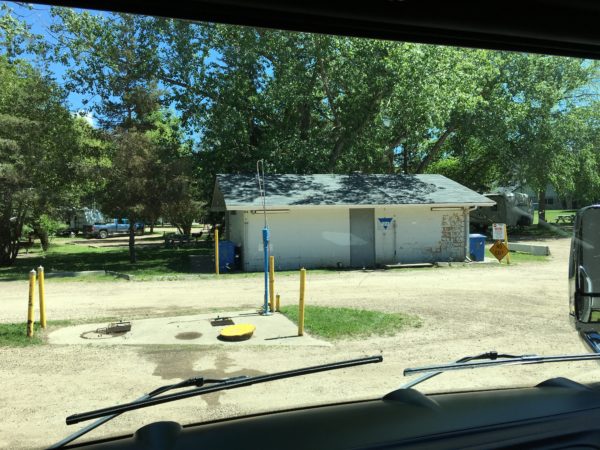
We headed, as we usually do our first afternoon in a location, for the Visitors Center and were reminded why we don’t spend a lot of time in big cities: Even on Sunday afternoon, there was lots of traffic and finding a place to park was a nightmare. When we arrived at the Visitors Center, we were delighted to find we could just make the last tour of the Alberta Legislature Building. [Unfortunately, we had to choose between the “Leg” and the appealing displays at the Center.]
Legislative Assembly Building
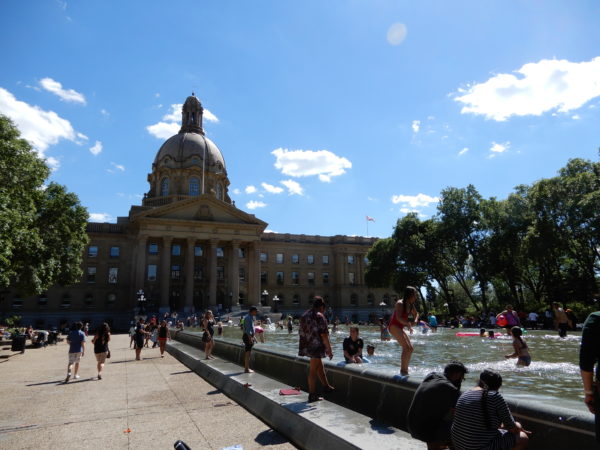
A road was rerouted through a tunnel in the 1970’s to allow for this popular open space.
The Beaux Arts style building was constructed between 1907 and 1913. Its Greek, Roman and Egyptian influences were included to evoke a sense of power, permanence, and tradition.
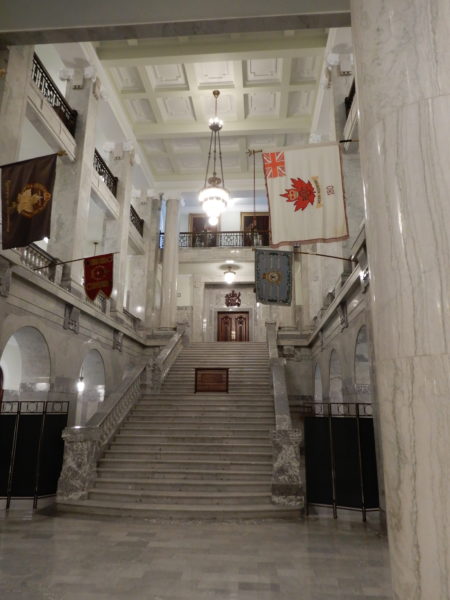
Grand staircase in the Rotunda
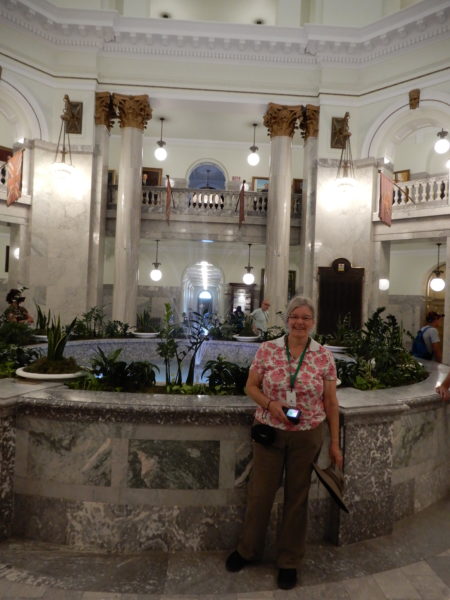
This fountain in the middle of the Rotunda was built in 1959 to commemorate the visit of Queen Elizabeth II.
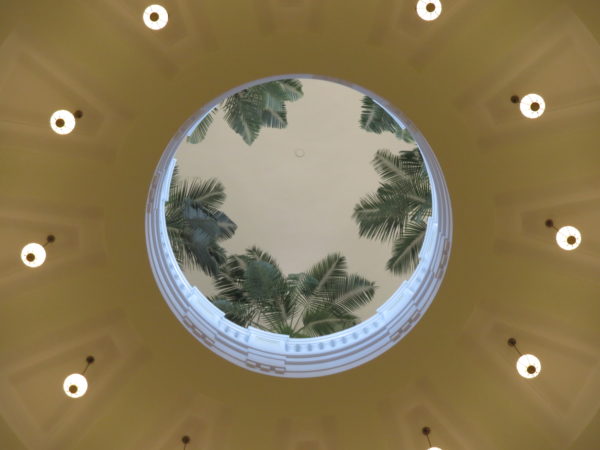
Palms grow at the top of the Rotunda. An article in the Edmonton Journal says they are more than 80 years old. They may have been a gift from California.
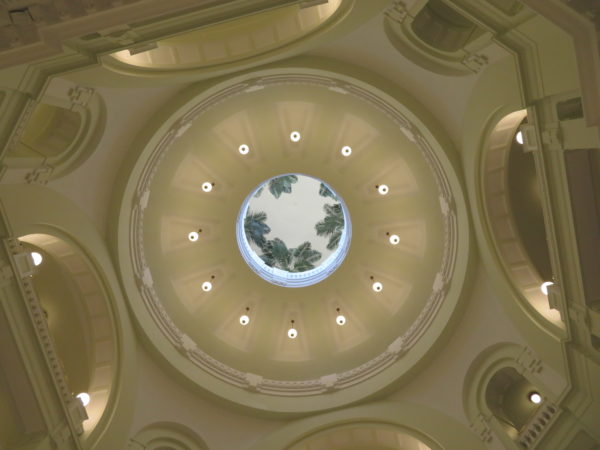
The Mace is the symbol of the Legislative Assembly’s authority to make laws. It is carried into the Chamber each day the Assembly sits and is placed on a rest with the crown pointing towards the Government (the party of the majority of the Members). The Mace at the top of the case in the picture below is the original Mace, made quickly out of recycled materials (yes, a toilet float is one of the parts) and intended to be temporary. It was used for 50 years. The current Mace is not in the case for security reasons: It is made of 5.7 kilograms of silver overlaid with gold and hand-etched with wild roses and other Alberta emblems. The Black Rod is used by the Sargent-at-Arms when escorting the Lieutenant Governor (the Queen’s representative) into the Chamber. It symbolizes the separation between the Crown and the elected Members.
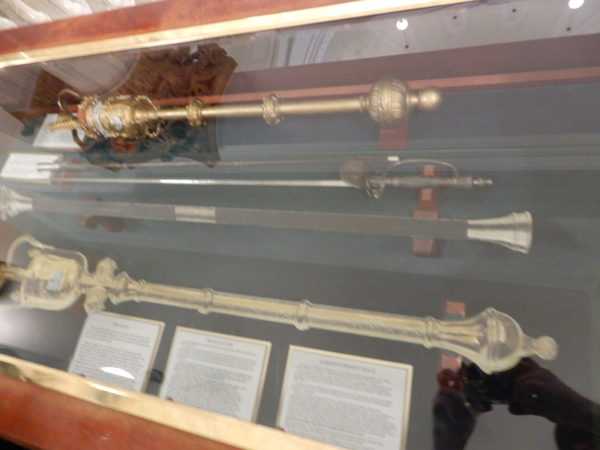
The main doors to the Legislative Assembly are located at the top of the Grand Staircase. The doors were carved from solid red mahogany. The carving of Alberta’s coat of arms took about 500 hours to complete.
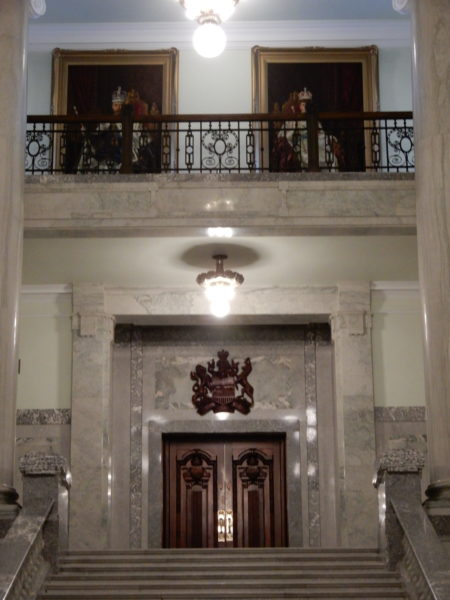
The Speaker’s chair and canopy are located at the south end of the Chamber. The Speaker presides over debate during meetings and is elected by secret ballot by fellow Members.
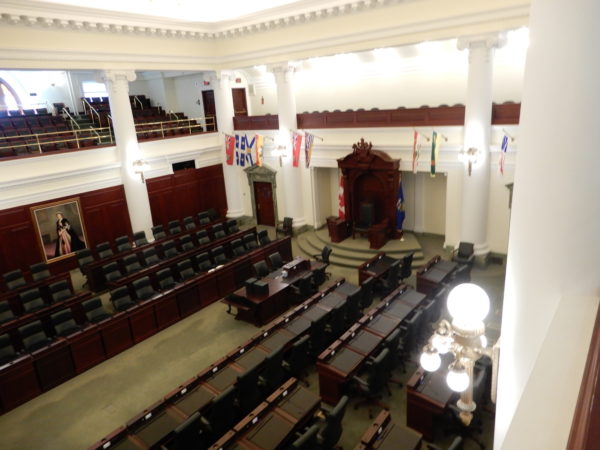
Members of the Legislative Assembly sit on either side of the Chamber. Members of the governing caucus are mainly seated to the right of the Speaker, while members of the opposition caucuses are seated to the Speaker’s Left.
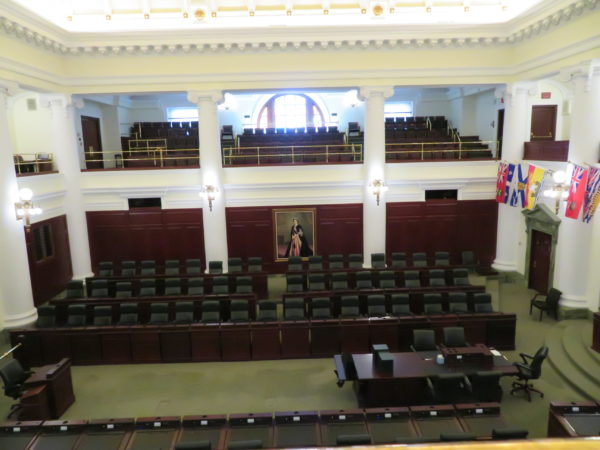
Below is one of a series of stained glass windows that highlight the role of the monarchy in Alberta.
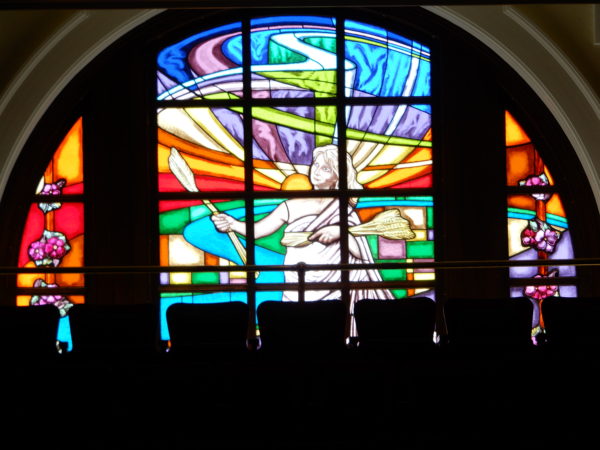
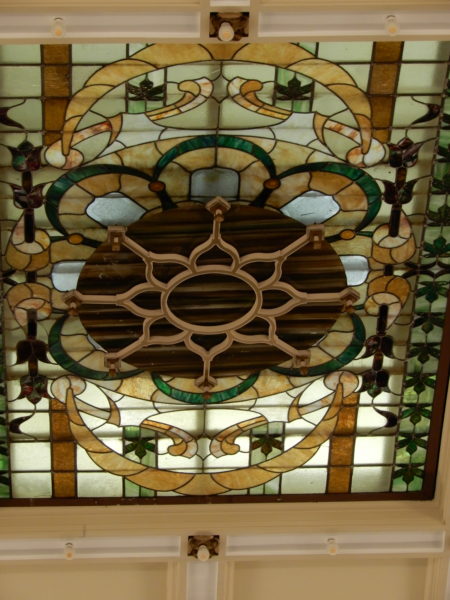
Stained glass in the ceiling of the Assembly Chamber
The Streets of Edmonton
We were amused by two stores.

Dave’s “no frills” grocery

A Dollar Tree where everything’s $1.25
Other adventures while we were in Edmonton took us to several locations outside of the city.
Leduc No. 1 Energy Discovery Centre
Leduc No. 1 was a major crude oil discovery made near Leduc, Alberta on February 13, 1947, after the company had drilled 133 dry holes. It provided the geological key to Alberta’s most important oil reserves and resulted in a boom in petroleum exploration and development across Western Canada. The discovery transformed the Alberta economy: Oil and gas replaced farming as the primary industry and resulted in the province becoming one of the richest in the country. Nationally, the discovery allowed Canada to become self-sufficient within a decade and ultimately a major exporter of oil.
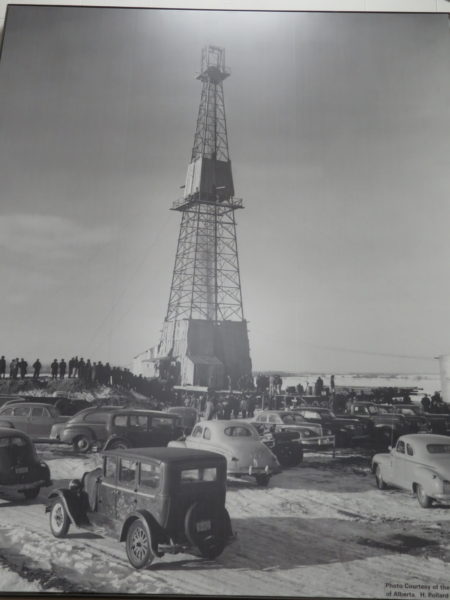
Leduc No. 1
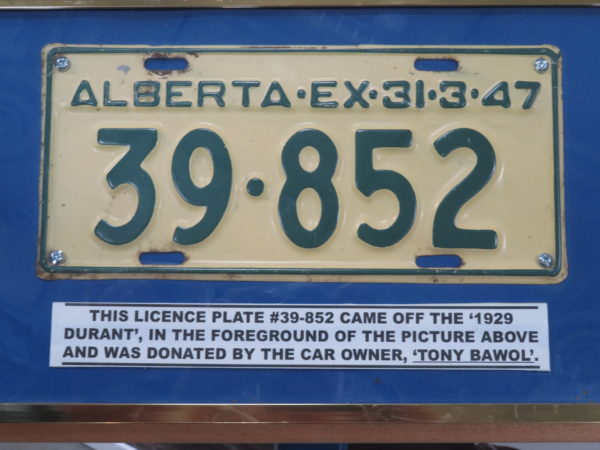
The well produced 317,000 barrels of oil and 323 million cubic feet of natural gas before it was decommissioned in 1974. The Leduc oilfield has produced over 300 million barrels of oil.
Billions of investment dollars flowed into Alberta following the discovery and the population of Alberta’s two major cities doubled within a few years. Calgary grew into a major financial center and the provincial capital of Edmonton became a major petroleum production center.
Leduc No. 1 and the Leduc-Woodbend oil field were designated a National Historic Site in 1990. The Leduc #1 Energy Discovery Centre opened in 1997 and features exhibits about Canada’s oil industry, including artifacts, photos, and oilfield equipment.
Dave, who had worked in the oil fields decades ago was particularly interested in the museum and explained to Jane the workings of the equipment and his memories of his experiences.
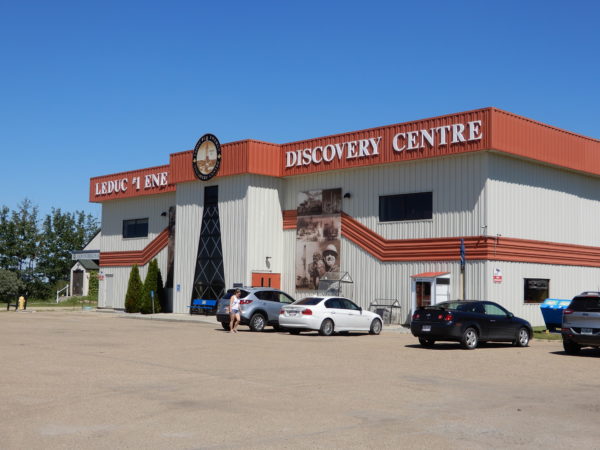
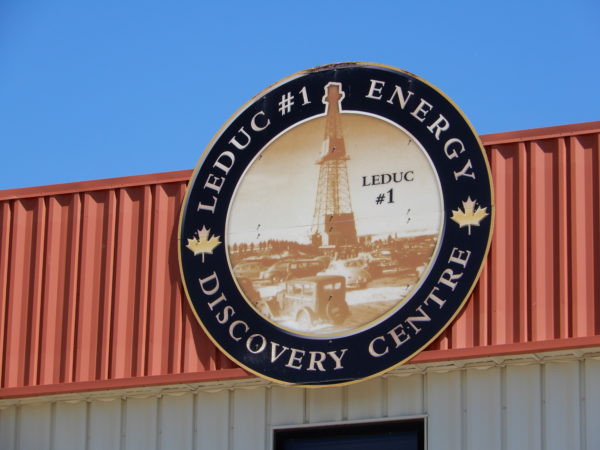
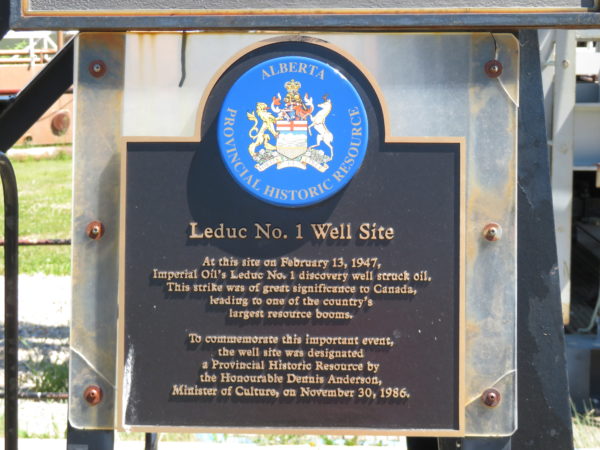
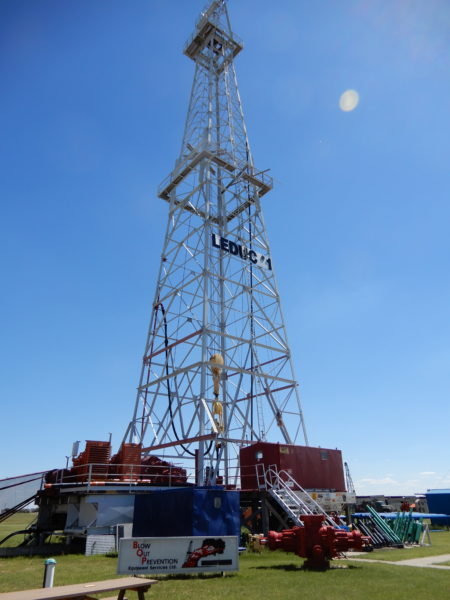
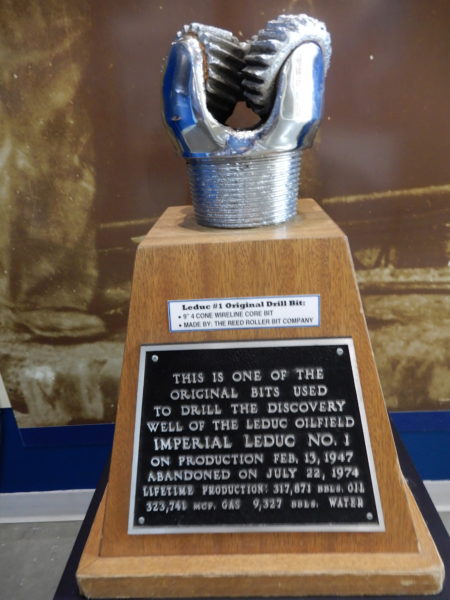
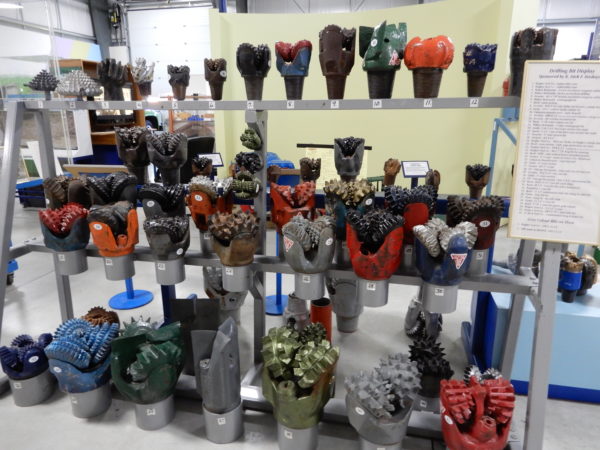
An extensive collection of drilling bits.
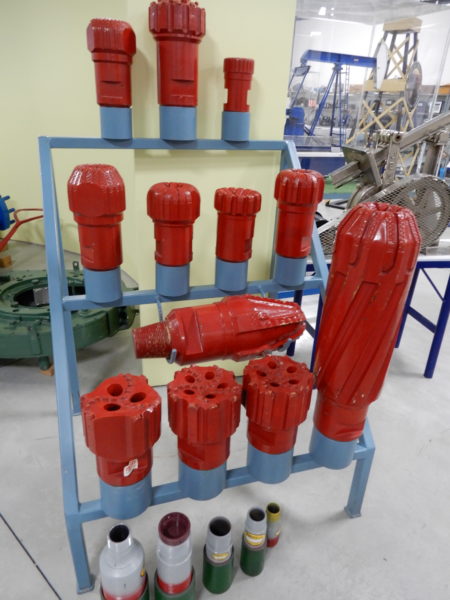
Coring bits used to collect rock samples from wells.
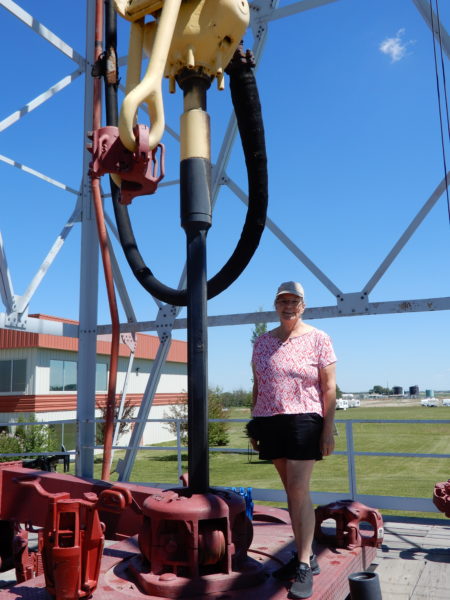
Jane standing by the turntable used to turn the pipe on the drilling platform floor.
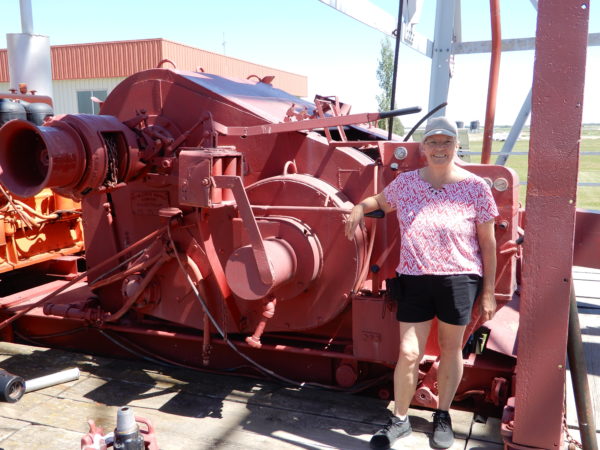
Jane ready to start drilling her next oil well.
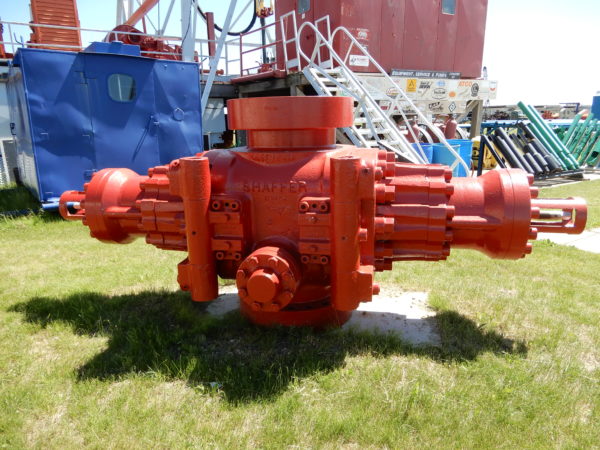
A blow-out preventer.
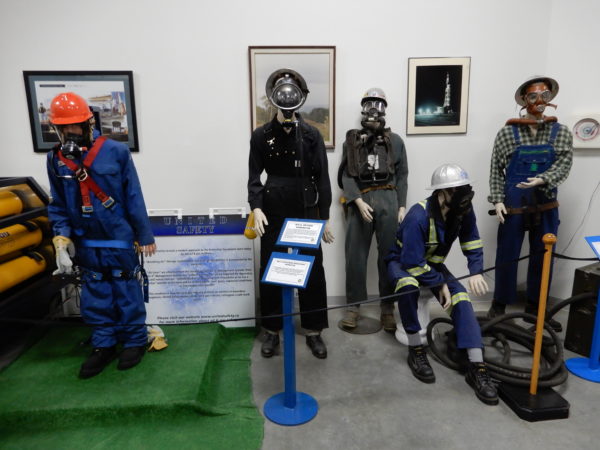
Oilfield safety equipment.
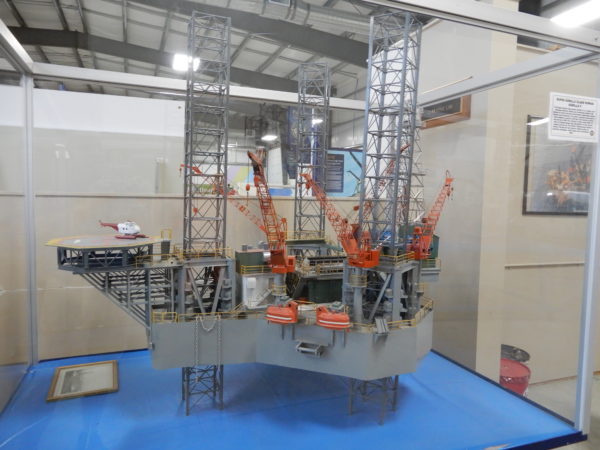
A model of an offshore oil rig similar to the ones Dave worked on.
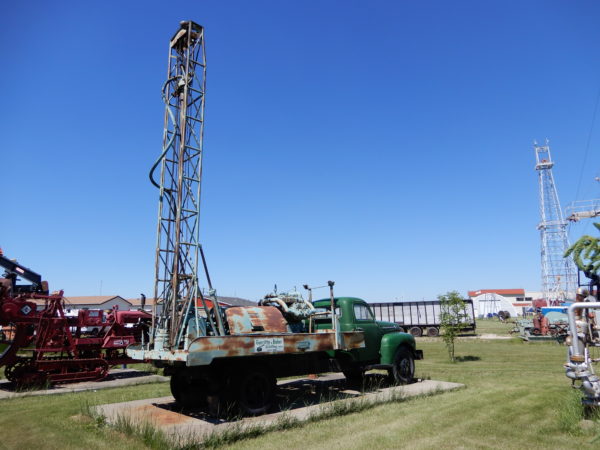
This small truck-mounted rig is similar to one that Dave’s father hired to try his hand at drilling an oil well. Dave was about 12 or 14 and, because his father was colorblind, Dave helped him identify the red and green colors of the Morrison formation. The well was, unfortunately, a dry hole.

Dave checking out new tires for the Jeep. Note the swallow flying through the tire.
Elk Island National Park
This “island of conservation” was established in 1906 when five men from the area who were concerned about over-hunting each put up $1000 and petitioned the government to set up an elk sanctuary. Their efforts became home to the densest population of ungulates (hooved animals) in Canada. The largest and smallest terrestrial mammals (the wood bison and pygmy shrew, respectively) live in this park as do coyote, moose, mule deer, lynx, beaver, elk, white-tailed deer, porcupine, black bears, timber wolves, and 250 species of birds.
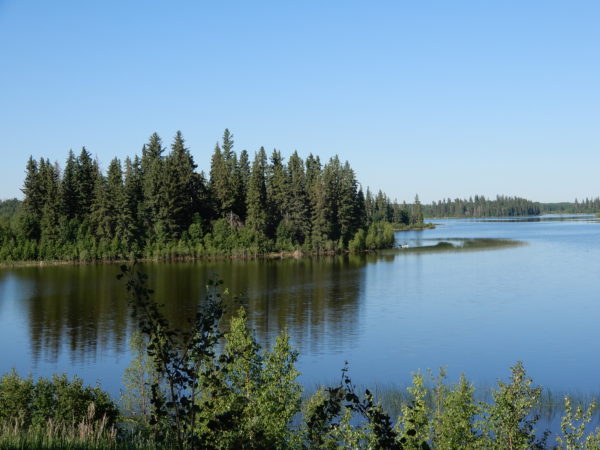
Astotin Lake
We had read that early morning was one of the best times to view wildlife at the park so, after about an hour’s drive, we were on the trail by 7:30. Innumerable mosquitos accompanied us. No mammals made themselves seen. Our long-sleeved shirts and long pants, sprayed with bug repellent, protected most of our bodies, but our faces remained prime targets and while we walked we were conscious of the mosquitos in the paths of our hands. The highlight of the 3-mile walk was coming upon a family of Canada geese.
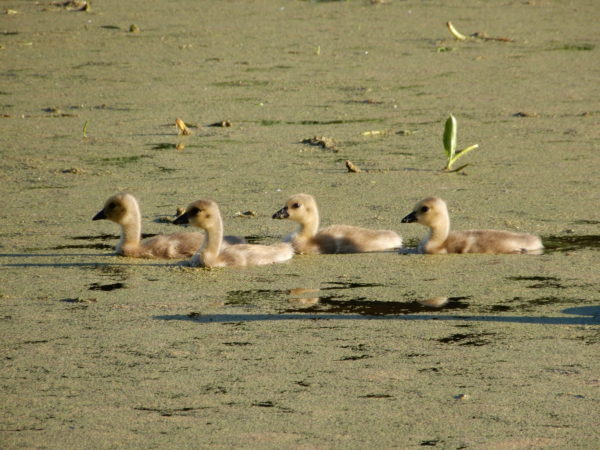
Fort Saskatchewan, Alberta
We stopped in Fort Saskatchewan on the way back to Edmonton from Elk Island. 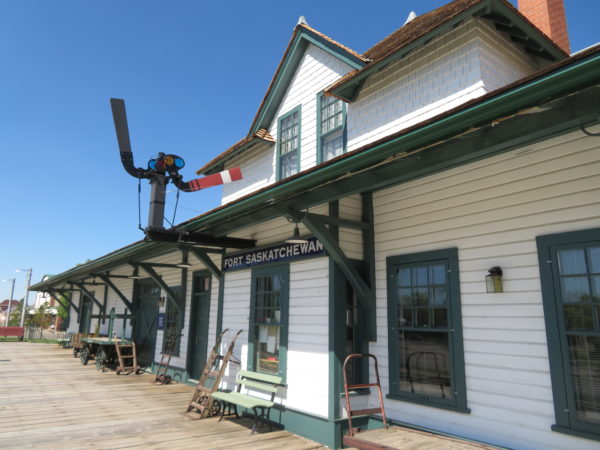
A park and a museum commemorate the arrival of the railroad in 1905.
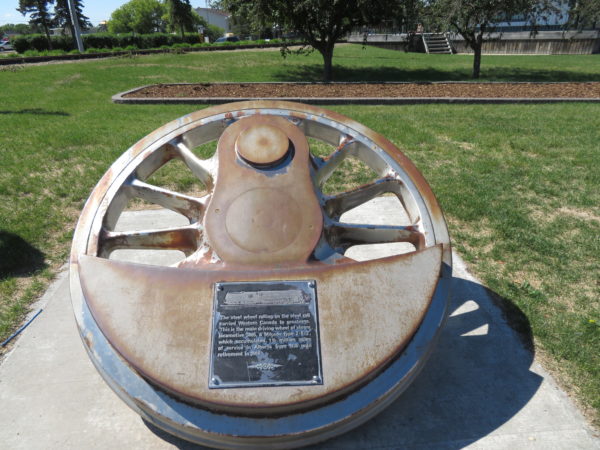
Driving wheel of a steam locomotive in service from 1935-1960. It accumulated 1.5 million miles.
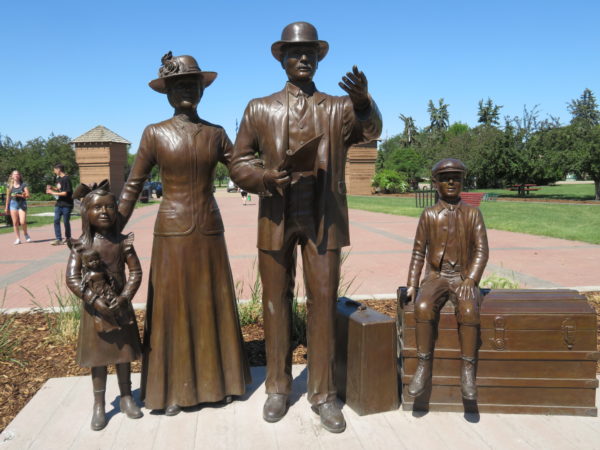
The copper statue “Acres of Dreams” features a young family arriving by train to start a new life.
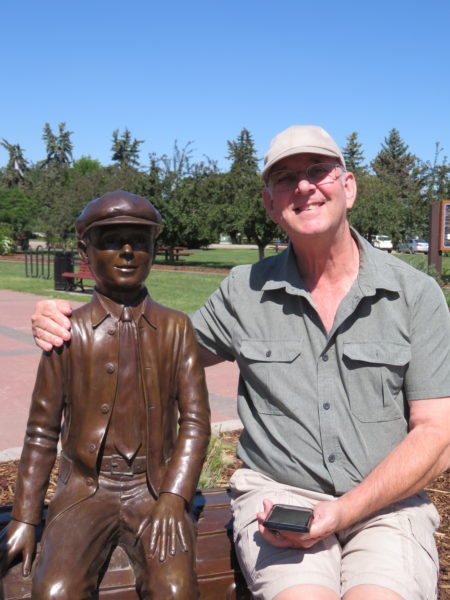
This young man was quiet and polite. Dave’s phone is in hand because he’s looking for a geocache.
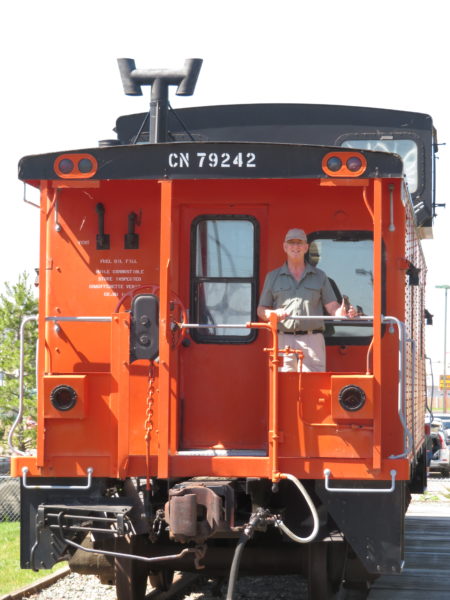
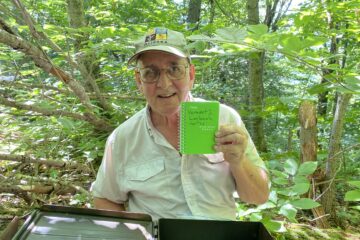
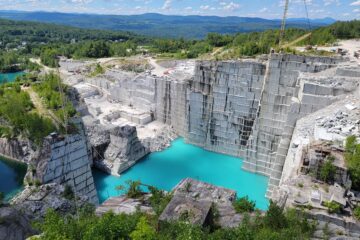
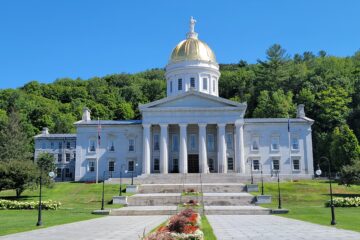
1 Comment
Alice McGregor · August 3, 2018 at 9:27 pm
Great story, as usual. Loved the Dollar Tree. We have them here so I imagine the conversion from US dollar to Canadian dollar necessitates the fine print.